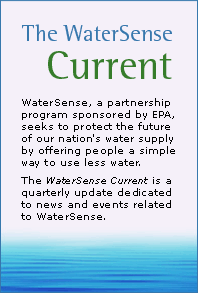The WaterSense Current Summer 2012
Issue XXIII, Summer 2012:
WaterSense Partners Champion Olympic-Sized Savings
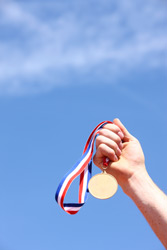
With this summer’s London Olympic Games just around the corner, WaterSense is proud to announce Olympic-sized savings of its own. Since the program’s inception in 2006, WaterSense labeled products have helped Americans save $4.7 billion in water and energy bills and 287 billion gallons of water. That amount of water could supply the entire city of Atlanta, Georgia, the 1996 Summer Olympic Games host city, for more than eight years!
WaterSense labeled products have also saved 38.4 billion kilowatt hours of electricity since 2006 by reducing the amount of energy needed to heat, pump, and treat water. That’s the equivalent amount of electricity needed to power more than 3.6 million homes for a year. With this energy savings, WaterSense has helped eliminate 13 million metric tons of greenhouse gas emissions—the equivalent of planting nearly 350 million trees.
WaterSense owes this success to the more than 2,600 utility, government, nonprofit, manufacturer, retail, distributor, builder, and irrigation partners who have joined with EPA to help promote the WaterSense label and spread the word about the importance of water efficiency.
In the past year, WaterSense and its partners have helped the number of WaterSense labeled products, programs, and new homes grow by leaps and bounds. By the end of 2011, more than 4,500 models of toilets, faucets, showerheads, and flushing urinals had earned the WaterSense label.
In addition, WaterSense labeled new homes have been springing up around the country, with more than 120 new homes earning the WaterSense label by the end of 2011. Compared to a traditional home, a WaterSense labeled new home can save a family of four as much as 50,000 gallons of water per year and up to $600 annually on utility bills.
In 2011, WaterSense reached another milestone by adding weather-based irrigation controllers to the list of product types eligible to earn the WaterSense label—the first outdoor product to join the lineup. WaterSense also made progress on creating specifications for a number of other water-saving products in 2011. The program continued developing a specification for commercial pre-rinse spray valves by conducting testing with several laboratories and coordinating with stakeholder groups to develop efficiency and performance criteria. Additionally, WaterSense issued a notification of intent to consider modifying aspects of the WaterSense Single-Family New Home Specification and began research on soil moisture sensors and commercial building-type flushometer-valve toilets.
Learn more about WaterSense’s milestones
California’s Cyber Rain Irrigation Controllers Are First to Earn WaterSense Label

It’s official: WaterSense labeled irrigation controllers have hit the virtual “shelves” of the Internet! In May, Cyber Rain, Inc.’s full line of controllers for residential and commercial irrigation was independently certified to meet the WaterSense specification for weather-based irrigation controllers. The company’s “smart” web-based offering is the first WaterSense labeled product for outdoor use.
“The WaterSense label is a significant one to have, so for us, we’re very proud to carry the first controllers to earn it,” says Ben Jamison, Cyber Rain’s vice president of sales and marketing.
Residential outdoor water use in the United States accounts for more than 7 billion gallons of water each day, mainly for landscape irrigation. Now home and business owners with in-ground sprinkler systems can achieve beautiful, more water-efficient landscapes by replacing their current controller with a WaterSense labeled irrigation controller. The label identifies water-saving controllers that provide ample irrigation for healthy plant growth without overwatering. WaterSense labeled controllers operate like a thermostat for your sprinkler system by telling it when to turn on and off based on local weather data. They have the potential to save homeowners across the country a total of 110 billion gallons of water annually and roughly $410 million per year on utility bills.
Cyber Rain’s innovative “irrigation controllers with a brain” use the Internet to check local weather and automatically adjust run times for a property’s outdoor irrigation system. Each Cyber Rain system includes an access point that is plugged into either an Internet router or a personal computer. The access point then wirelessly communicates with Cyber Rain controllers to send schedule updates and receive irrigation activity reports. Most of Cyber Rain’s residential controllers can communicate about 300 feet, approximately the length of a football field, from the access point. Its long-range commercial and residential models can communicate up to 2 miles with a proper antenna.
According to Cyber Rain, its users can save up to 40 percent on their water bills, and the system can often pay for itself in one to two years. “Our company is all about building controllers that allow customers to save, as well as manage their irrigation system in a much more efficient way,” Jamison says.
Cyber Rain has been a WaterSense manufacturer partner since February 2012. Twenty of its irrigation controller models have earned the WaterSense label, including long-range and standard types. Learn more about how WaterSense labeled irrigation controllers are making it easy for home and business owners to maintain water-efficient landscapes this summer.
EPA Video Project Asks Americans to Show Why Water Is Worth It
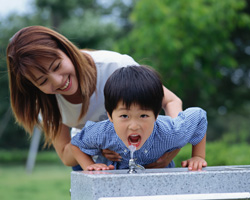
This year marks the 40th anniversary of the Clean Water Act. To commemorate the legislation’s four decades of helping to protect our nation’s water resources, EPA invites you to submit a 15-second video containing only original content that describes the important role water plays in your life. Each video should include the phrase “Water is worth it because…,” but the rest is up to your creativity.
EPA will select the best videos to highlight on its website and Facebook page. Applicants must fill out a video entry form and submit their entries as a video response to EPA’s promotional clip, which is found on EPA’s YouTube page![]() . To be considered, video submissions must be received by September 14, 2012.
. To be considered, video submissions must be received by September 14, 2012.
Everyone deserves clean water—it is vital for our health, communities, environment, and economy. So, grab your friends, family, coworkers, neighbors, classmates, and pets, and let EPA know why “water is worth it” to you! To learn more and register, visit EPA’s video project Web page.
Being Water Smart This Summer Means Having a Beautiful Yard With Ease
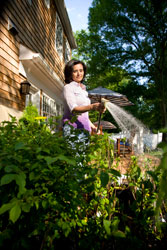
Summer’s rising temperatures go hand in hand with increased outdoor water use. WaterSense shares some summer watering tips and advice from Kathy Nguyen of the 2011 WaterSense Promotional Partner of the Year Cobb County (Georgia) Water System. Taking these easy steps will help ensure a healthy, beautiful landscape that uses less water and time.
Take Control of Your Controllers
In the 11 years Nguyen has worked for Cobb County Water System, she’s found that most customers are simply unaware of how much water their irrigation controllers put out. Many assume the amount is not a big deal—that is, until they see their water bills.
“The simplest thing consumers can do to reduce outdoor summer water use is to find out if they have an irrigation controller—that’s how disconnected folks are with their systems,” Nguyen says.
She recommends homeowners spend some quality time getting to know their irrigation systems this summer. For example, those with an automatic irrigation system should know how to turn it on and off. If they don’t, Nguyen says, they should ask a local certified irrigation professional to show them how.
“What has consistently saved the most water is when customers turn their automatic irrigation controllers on and off manually. Then, they are more apt to be involved in evaluating whether their landscape needs watering,” she says. Alternatively, you can replace an existing clock timer with a WaterSense labeled, weather-based model.
Spy on Your Sprinklers
As Nguyen likes to remind Cobb County customers, no matter how much you water it, you can’t grow pavement.
“It’s a waste of money and water when water is hitting an impermeable surface,” Nguyen says.
This summer, she proposes home and business owners watch their sprinkler system run through each watering zone at least once to see how much concrete is inadvertently being watered. Systems that run overnight or at other times when users are not present can apply water to pavement that then evaporates before the user returns to the site.
Another way to keep water off the pavement this summer is to break out the broom—sweep steps, sidewalks, and driveways rather than hosing them off.
Give Your Grass the Step Test
Even if you don’t have an irrigation system for your yard, you can take steps to save water and improve your lawn’s health and beauty. Grass doesn’t always need water just because it’s hot out, Nguyen notes. Step on the lawn, and if the grass springs back, it doesn’t need water. She recommends performing this “step test” in the early morning or late evening to get the most realistic view.
“Plants are great actors. If you go outside and do a step test during the hottest, driest part of the day, your flowers might look wilted and the grass is going to feel crispy, but your grass is likely going to bounce back once it’s benefitted from the afternoon dewfall,” Nguyen says.
Still not sure? Consider using a soil moisture probe. This inexpensive tool is inserted alongside grass and plant beds to detect whether the soil at the roots is wet, moist, or dry. If the sensor gives a reading of wet or moist, Nguyen suggests making plants’ roots work to obtain that water for a less “needy” landscape.
“People can sometimes baby their plants, but what makes plants thrive is a little tough love,” she says.
Learn additional ways to save on your summer water bill, while enjoying a landscape that’s both beautiful and convenient.
EPA’s National Building Competition Has Owners Thinking Green and Blue

Since 2010, EPA’s National Building Competition has challenged commercial building owners across the nation in a head-to-head battle to see who can reduce their energy use the most. But with hotels, retail stores, office buildings, hospitals, and other commercial/institutional buildings accounting for approximately17 percent of publicly supplied water use, it made sense to add water to the mix.
This year, WaterSense and ENERGY STAR® are teaming up to challenge commercial buildings to reduce energy and water use in the 2012 Battle of the Buildings. The competition’s new “top water saver” category gives competing facilities a chance to demonstrate how reductions in water use can positively impact their communities.
Battle of the Buildings participants who have signed up for the water saver challenge will submit their water use data for calendar year 2011, then work to reduce water use throughout the year while measuring their progress in ENERGY STAR’s online tracking tool, Portfolio Manager![]() . To learn how to others are reducing and to share their progress, participating building owners and managers can join monthly networking sessions.
. To learn how to others are reducing and to share their progress, participating building owners and managers can join monthly networking sessions.
As building owners install new water-saving measures during the competition, they have the opportunity to educate residents, employees, students, and other facility users about water efficiency. For example, as a 2011 Battle of the Buildings competitor, the University of North Carolina introduced a shower timer to its students. The inexpensive feature educated students on how they can save water and the energy used to heat it by shortening their shower times.
To earn the distinction of top water saver, a building must have the greatest percent reduction in water use indoors, outdoors, or a combination of both. Participants who improve their building’s overall energy efficiency by 20 percent will be listed on ENERGY STAR’s website![]() . The 2012 top water savers will be announced in April 2013, along with top energy savers.
. The 2012 top water savers will be announced in April 2013, along with top energy savers.
Find out more about commercial and institutional water efficiency and look for WaterSense’s best water management practices for commercial and institutional facilities, coming this fall!
Is Your City Water-Wise? Check Out the National Mayor’s Challenge Winners
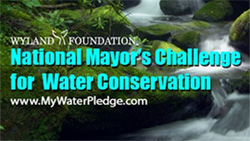
The 12 most “water-wise” cities in the country were recently recognized by the 2012 National Mayor’s Challenge for Water Conservation. Sponsored by the Wyland Foundation, a nonprofit dedicated to protecting the world’s oceans, waterways, and marine life, the friendly competition among U.S. cities was supported by WaterSense and other public and private partners in honor of the 40th anniversary of the Clean Water Act.
Mayors from across the country asked their residents to make a free, online commitment at MyWaterPledge.com![]() between March 30 and April 30, 2012, to reduce their water use. Cities in various size categories and regions with the highest percentage of people to make water saving pledges within their ZIP code area were deemed the winners.
between March 30 and April 30, 2012, to reduce their water use. Cities in various size categories and regions with the highest percentage of people to make water saving pledges within their ZIP code area were deemed the winners.
Overall, residents from more than 1,000 U.S. cities pledged to reduce their water use by nearly 6 billion gallons. Winning cities include:
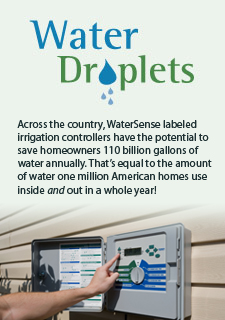
- Laguna Beach, California
- Victoria, Minnesota
- South Shore, Kentucky
- Charlestown, New Hampshire
- Manhattan Beach, California
- Eden Prairie, Minnesota
- Fort Pierce, Florida
- Quakertown, Pennsylvania
- Greeley, Colorado
- Madison, Wisconsin
- Charlottesville, Virginia
- Toms River, New Jersey
“The Mayor’s Challenge does two important things: it reminds people that conservation starts with individual action, and it shows the cumulative potential impact when groups of individuals in a community make a commitment to reduce their water use,” says Wyland Foundation Vice President Steve Creech.
The pledge program originated in 2005 as part of a series of traveling museum exhibitions featuring life-size interactive mazes called Water’s Extreme Journey![]() , through which families could venture to learn about the human impacts on water. Participants were led to a computer kiosk at the end of the maze, where they were asked to make pledges to save water indoors, outdoors, and throughout their community.
, through which families could venture to learn about the human impacts on water. Participants were led to a computer kiosk at the end of the maze, where they were asked to make pledges to save water indoors, outdoors, and throughout their community.
View the 2012 challenge’s complete nationwide results![]() by region and population.
by region and population.



